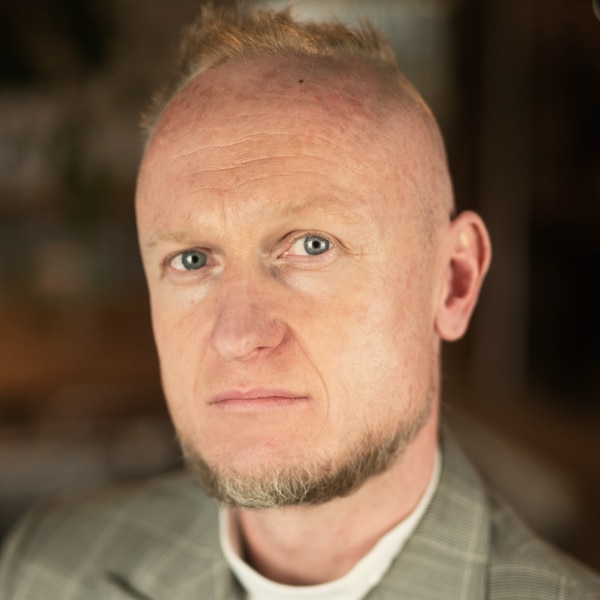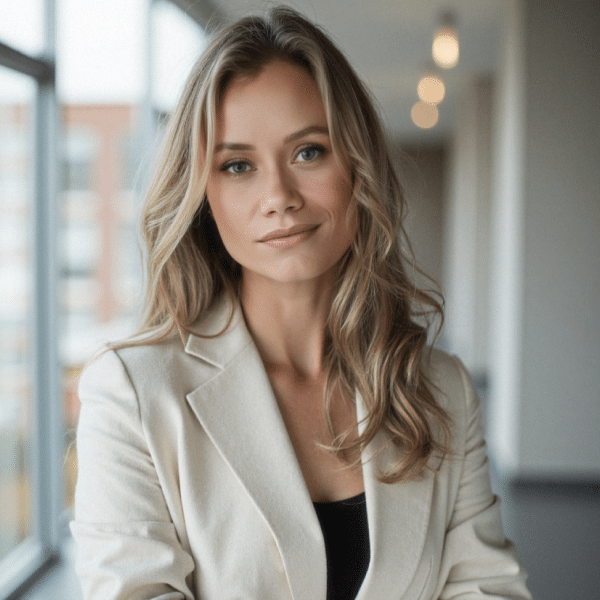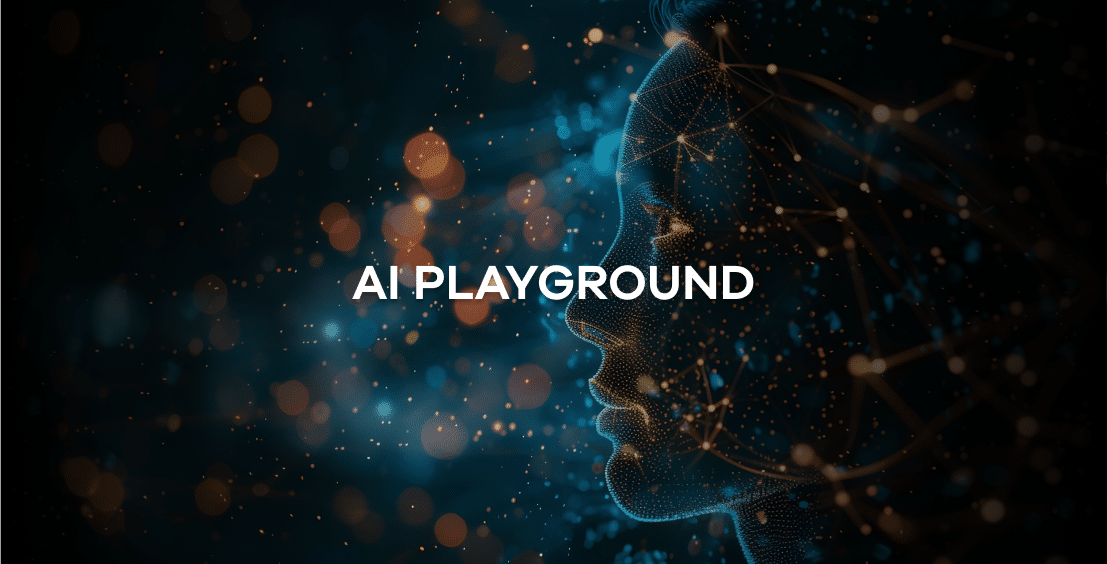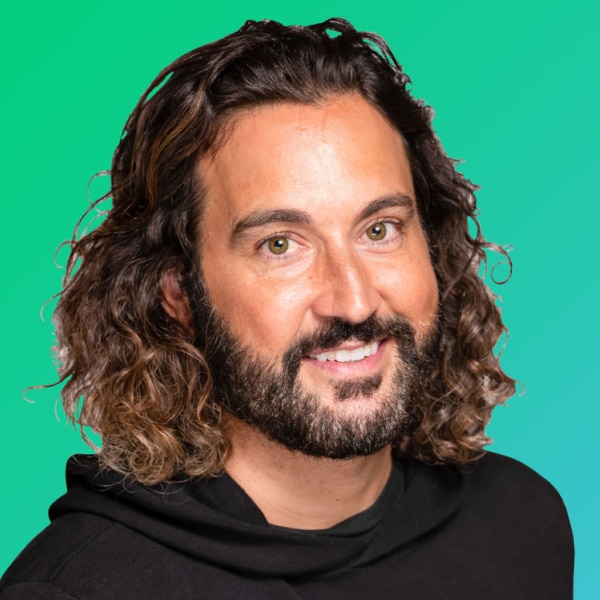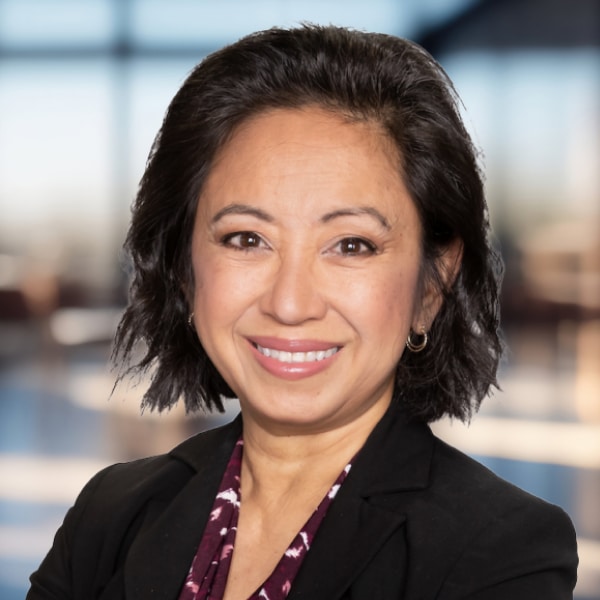The Future Of Digital Media: AI, Transparency & Smarter Marketing
Tal Jacobson
CEO of Perion
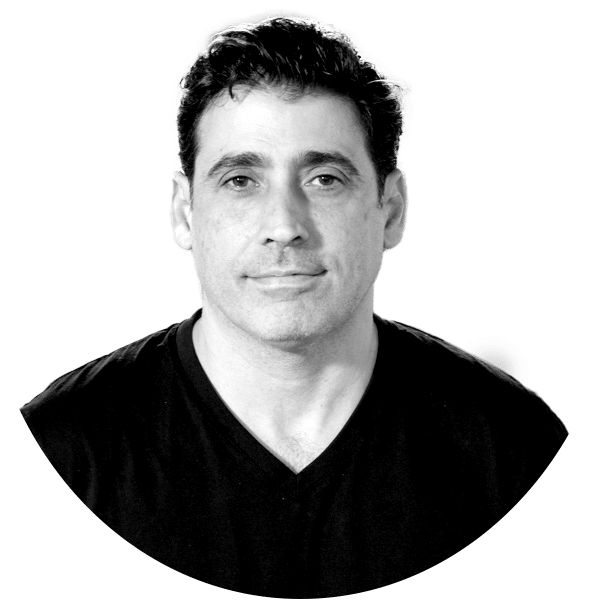
“It's time to stop wasting money and start investing in better data, better insights and better marketing decisions.”
Tal Jacobson
Tessa Burg welcomes Tal Jacobson, CEO of Perion, for a conversation about the fast-moving world of digital media.
Tal shares insights from his nearly 30-year career in digital marketing. With a deep understanding of both technology and media, Tal explains why marketers need to shift their focus from channels and formats to audience behavior—and how AI can help cut waste and drive real results.
“AI can analyze behaviors in real-time—no need for personal data to understand what works.”
Tal explains how to navigate a complex media landscape, optimize ad spend without relying on outdated methods like cookies, and gain real clarity on what’s working. He also breaks down how AI-powered solutions can unify campaign strategies across platforms, eliminate inefficiencies, and make marketing smarter—not just automated.
“AI is not here to replace marketers—it’s here to make marketing better and reduce waste.
Highlights:
- Why marketers should focus on audience behavior over platforms
- The future of digital media beyond third-party cookies
- The importance of transparency and efficiency in ad spending
- The rise of digital out-of-home advertising
- How AI is reducing marketing waste and improving optimization
- Challenges CMOs face in proving ROI
- The evolution of websites and their place in today’s marketing mix
- How Perion’s platform unifies media buying for better results
- AI-powered audio ads and the next frontier of personalized marketing
- The importance of local marketing and dynamic ad optimization
Watch the Live Recording
[00:00:00] Tessa Burg: Hello, and welcome to another episode of Leader Generation brought to you by Mod Op. I’m your host, Tessa Burg. And today we have maybe the biggest guest we’ll have all year. And it’s only what? February? I don’t even know what happened in January. But we are welcoming Tal Jacobson. He is the CEO at Perion.
[00:00:22] Tessa Burg: He has been a part of starting some really incredible groundbreaking companies in the past, and he has spent time on both the client side, on the tech side. Even cut his teeth on the agency side. So, today, we’re going to be talking about How we can navigate a very fast-paced, ever-changing media market.
[00:00:44] Tessa Burg: And there is no one better to talk about that than Tal, who has done this across digital media and technology for over two decades. Tal, thank you so much for joining us today to have this conversation.
[00:00:56] Tal Jacobson: Thanks for having me.
[00:00:59] Tessa Burg: So before we jump in, tell us a little bit about yourself and the company you’re leading now, Perion.
[00:01:07] Tal Jacobson: Sure. So I’ve been You know, I’ve been doing this online marketing, digital marketing, um, for almost 30 years. Started in 1997 at a company called Macromedia that I think revolutionized the internet with Flash. And I think a lot of the marketing magic happened in the 90s and 2000 with Flash, then got acquired by Adobe.
[00:01:38] Tal Jacobson: Um. So, um. And, you know, that’s, that was the first time I’ve done, I don’t know if to call it digital marketing, but I’ve done marketing at scale, uh, revolutionizing how we’ve done this before with, you know, basically building a way to do mass marketing or effects. Which was, when thinking about it now, we’re still at the same place, right?
[00:02:04] Tal Jacobson: Figuring out where to find our client and what’s the message. So I’ve been doing this for almost 30 years, spent some time in macromedia. Uh, then it, uh, ICQ, which got acquired by AOL. Um, I, I worked for an agency, McKinn, which is part of IPG, for a few years, brought digital to, to that. And then was part of a founding team for a company called similar web, which were, we were like five people in a room trying to figure out what are we doing here and building this amazing platform, which I know people keep using around the world, which is great.
[00:02:43] Tal Jacobson: And then a bit over six years ago, I’ve joined, um, a company called Perion. Which has been around for almost forever and got pivoted over and over again with M&A’s and now we’ve totally shifted how the company works. We’ve just announced it a few days ago that we’re gonna pull all our technologies into one platform and we only have one goal and the one goal is to help CMOs figuring out how to get more out of their budget.
[00:03:20] Tal Jacobson: We’re not trying to replace any DSPs or any other platform. We’re just trying to help CMOs get more transparency and a better way of really understanding what’s going on across this insanely big and very complex multiverse of, of, of channels and platforms and formats. So, uh, maybe, maybe an extremely long intro, but that’s where I am.
[00:03:50] Tessa Burg: No, I. I think it’s important that everyone knows your background because this isn’t the first time that you’ve helped companies, especially companies you’ve co-founded or helped build, focus on giving users more transparency, better understanding on how their brands are interacting with consumers, with people coming and reaching out to them online.
[00:04:13] Tessa Burg: But now you’re doing it in, at a time and in a space that is moving so quickly. And the number one piece of feedback that we get from our clients is what is my ROI? What is the return on what I’m spending? And there’s such a diverse mix. What’s the influence and measurements of both? And right now, even though there’s like a ton of conversations around AI, we were talking about before we got on the phone, marketers just really want to know what’s working, what’s not.
[00:04:47] Tessa Burg: What’s going to happen as this media landscape continues to get more diverse and the deprecation of third-party cookies? How do you approach that? How do marketing leaders evolve their approach right now in this time and space?
[00:05:03] Tal Jacobson: So, uh, you know when people ask me Is AI going to replace them or what do they do with AI?
[00:05:10] Tal Jacobson: How do we get smarter with AI? Uh, how do I get better at Hawaii with AI? I, you know, I usually say, you know, AI is a tool. This is not a replacement. So yes, within everything we do, we have AI, but we have AI just to, you know, make our work, our daily work better, faster, be able to learn better. Um, the, you know, the whole thesis behind Perion platform is how do we look at all the different channels and stop wasting so much, so much money by learning what works in each platform.
[00:05:51] Tal Jacobson: So imagine, I don’t know what, let’s take a random brand. This is not a real example, but let’s take, uh, with Audi, right? So imagine Audi now launches a new car. A new brand, a new model of core, uh, targeting, I don’t know, females at the age of 30 to 60. Right. So now different agencies with different teams would need to try to figure out without speaking to each other.
[00:06:19] Tal Jacobson: What creative works for women at the age of 30 in New York for a new Audi. So the team of that works on the meta platform would, would waste a lot of money to figure this out. And then you’re going to have a team on you for YouTube, which is a different team and then a team on for TikTok or for.
[00:06:40] Tal Jacobson: Pinterest or for CTV or for out-of-home, but you don’t need to waste so much money, right? If you would have just a unified platform, and that’s where AI comes in, that can look at the entire data and say, We figured out that women in urban environments like to have images of a car with, I’m just making this up.
[00:07:06] Tal Jacobson: I have no idea, but maybe two kids in the car and I don’t know what, right? So the amount of waste we have because all the platforms are siloed. AI can really figure it out. That’s what deep learning means, right? How do I take data and super fast learn what do I need to change? That’s really where AI comes in.
[00:07:31] Tal Jacobson: I don’t think AI is going to replace people that do marketing. I think AI is going to make it so much more better. And I think it’s just going to reduce a lot of waste.
[00:07:43] Tessa Burg: Yeah, and in your example, you talked about the audience first. And so Marketers who are thinking about who is their customer, what do they want to learn about them?
[00:07:55] Tessa Burg: How do they want to show up for them? That’s still the same approach, but you’re eliminating the amount of time spent on trying to understand that audience manually channel by channel and trying to aggregate all that data. I still see some people pull things multiple channels into Excel sheets, which double counts, you know, like even when you look at Google Analytics, this is not giving you exact accurate numbers and we get that question all the time.
[00:08:25] Tessa Burg: Like, well, I need these things to add up like without AI, like. That’s very, well, probably impossible, but people are spending so much time thinking about the channel where now this gives you the freedom to continue to focus on the audience and how is your brand showing up for them?
[00:08:45] Tal Jacobson: Right. No, I think you’re absolutely, I think you, you touched the most important point.
[00:08:50] Tal Jacobson: You know, as I, you know, as I said, I’ve 30 years. The one thing you learn as a marketer is figure out who’s your audience. What do you need to tell them? What is the right moment to tell them that? And then they’re gonna buy. But instead of that, in the past, I don’t know what, 10, 15 years, everybody got obsessed about formats and channels.
[00:09:15] Tal Jacobson: Okay, so what do you do on CTV? Who cares, right? What do you do in out-of-home? What do you do in TikTok? Like, really, who cares? It’s about how do I optimize to the right audience, at the right time, with the right message. So I would get the best conversions that my company needs. Now you probably know this, right?
[00:09:38] Tal Jacobson: CMOs are getting replaced every 18 months. It’s because, and it’s not because of them, it’s their, I mean, I, I’ve met some amazing CMOs. It’s about, it’s almost impossible with this huge multiverse of platforms to figure out what actually works. I think we should go back to the original, uh, you know, method of marketing.
[00:10:04] Tal Jacobson: Just figure out your customers, where do you find them, how you measure that. Stop talking about channels and platforms, that’s just a bunch of nonsense.
[00:10:15] Tessa Burg: Yeah, I agree. So tell us, let’s get let’s talk a little bit tactical now. How is Purion helping to solve some of these and answer some of these tactical questions about, you know, how am I going to target when third-party cookies are deprecated?
[00:10:30] Tessa Burg: What do I do now that there are stricter data, privacy and regulations?
[00:10:38] Tal Jacobson: So, you know, when you think about, you know, everybody is obsessed with cookies. But when you really think about it, you know, cookies are for websites. Websites are not the fastest-growing format, right? It’s not. So I don’t know why people are obsessed with that. There are no cookies on CTV. There are no cookies on social.
[00:11:00] Tal Jacobson: There are no cookies that are out-of-home. Uh, and websites are not, are not the future. Now, it’s true that websites are still here. But with everything with, you know, the chat AIs. Now bypassing search search engines, which and search engines on the only way to actually get websites. I wouldn’t be too concerned about that.
[00:11:25] Tal Jacobson: Now, having said that, you know, we’ve built about three years ago, a predictive algorithm that sits on website calls sort S O R T. It’s a deep learning algorithm and it doesn’t know the customer, but it knows behaviors, right? So it would know that. If somebody’s browsing, uh, surfing on a, on a website at 2 a.m. in New York, and he has a Mac, and he reads about football, he’s probably going to buy those specific products, right? So, and this replaces cookies. You don’t need to know who’s the person, you just need to know how likely would he be. Thank you. Would it be to buy that product now? I I’ve been saying this for years that cookies just don’t make sense I mean how many times we did you went online looked for a for An hotel somewhere you booked it and then for the next two months you’re seeing Banners for that hotel right and you already booked it.
[00:12:34] Tal Jacobson: It’s and again, it’s it’s a way of wasting money not optimizing Uh conversions, so it’s not like cookies were perfect But as we progress into that omni channel, I think cookies are going to be less and less relevant.
[00:12:51] Tessa Burg: So, I think you probably just blew some people’s minds. I know that. I’ve been saying for years that, um, we need to stop being obsessed with the cookie data and ditch PII.
[00:13:03] Tessa Burg: Like, worked in B2B marketing for a long time. So much of success is measured on, do you have their name? Do you have their email address? What do we know about them? And there is so much untapped. Behavioral data that you could better understand the audience forget names, addresses, titles, understand the behavior at time and place and be there, be there in that moment.
[00:13:27] Tessa Burg: So. I love hearing that. At the same time, there are a lot of marketers investing a lot in their websites. So I’m just curious, like, how do you see the role of the website evolving? And If we’re talking about be there in the right moment, what are some of the new platforms that are going to become more important to deliver on that value?
[00:13:59] Tal Jacobson: Um, you know, as we said, you know, it’s not about the, the website or format. It’s about. Human behavior, right? Who are your customers? They’re people. And if they stop or they’re using websites less, then, then that’s not the future, right? So, maybe they’re on TikTok now. Maybe they’re on Instagram. Maybe they’re on YouTube.
[00:14:22] Tal Jacobson: I don’t know. It depends on the brand. But where do you find them? And what, when do you find them in, in that moment that they would buy? Right. So again, maybe you want any website so they could complete the acquisition. That’s fine. Um, but if the website itself is the place you want them to continue to hang, then maybe that’s not, maybe that’s not a strategy.
[00:14:53] Tessa Burg: Yeah, I agree. And I’ll also say if listeners are not following Tal, you should find them on LinkedIn. How many, you have like a gazillion followers? Over 11, 826 people are already him, but I think this is a really important conversation, but also validates why great visionary marketers will still have jobs.
[00:15:18] Tessa Burg: It doesn’t mean ditch your website right now. It means start to understand that audience and start to evolve how and where you show up in the journey. And I know that one thing that we’ve started to see is, you know, digital out-of-home is rapidly emerging, um, for all kinds of different clients. I mean, and, and specifically.
[00:15:41] Tessa Burg: When we think about digital out-of-home and that’s, that’s kind of, that’s different for digital marketers, CTV, you know, adding in these other channels, but looking at it across the landscape and not just being like channel picking. How does Perion help optimize for that audience across those channels? And get marketers who these channels might be new to them, get them comfortable with sort of letting go of channel specific tactical execution.
[00:16:11] Tal Jacobson: Yeah, I think that’s a good point. Uh, you know, I think me personally, I love out-of-home advertising. Um, we found ads that I think in the US they started at 1830.
[00:16:29] Tal Jacobson: So 200 years ago in out-of-home ads. Um, but I think only in the past 10 years, it really became accessible to everybody with programmatic out-of-home, where you can actually add more data layers, no PII, but data layers. Like, how would my ad look like when, uh, when it’s raining, right, or when it’s foggy or where there’s a traffic jam.
[00:16:57] Tal Jacobson: And I read a lot of texts when I’m on my highway and the highway and I’m speeding or as opposed to heavy traffic, right? So a lot of AI comes into out-of-home. Now, within our platform, you can, you can actually plan. Based on your audience, not based on the formats on the platforms, which we’re just thinking, how would you find your audience, right?
[00:17:28] Tal Jacobson: out-of-home is a big part. I think at home is a big part, especially for, um, local brands or consumer brands. I think out-of-home is, is such an untapped opportunity of advertisers are, are using it yet. I think it’s, I think that’s going to be huge. Um, I don’t know if you saw the statistics that, um, I think 87 percent of people still buy in physical stores versus online and out-of-home actually drives people to those stores, right?
[00:18:01] Tal Jacobson: So out-of-home is huge. CTV, I think it’s the first time in history that every small brand or local business can advertise on TV with CTV, right? It’s you don’t need to buy nationwide ads. You can have, you know, local ads. Now our platform specifically has something we call DCO, right? So DCO is the dynamic.
[00:18:29] Tal Jacobson: Um, kind of optimization based on AI, which means that every TV would see something different. We had an amazing campaign for Golden Curl across the United States, and each TV you saw their ad and you saw a map. How much time would that take you to get to their, uh, local restaurants? And would that be faster for you to go there and eat?
[00:18:57] Tal Jacobson: Versus to buy groceries and cook, but every TV saw something different, right? So the fact that you now have this dynamic ability to buy locally, it’s just, you know, it’s, uh, it just brings out-of-home and TV ads to the mass, right? Everybody can do that now. It’s not, not, not very expensive. So I would, I would suggest all marketers to look at it as an opportunity.
[00:19:29] Tessa Burg: Yeah, I know that. I know I had a lot of Golden Corral and in college and if I would have seen a map and how close it was more frequently, but I think that it hits on. Also marketers spending their time on what is that creative? What is the message? What’s really going to resonate when they see this, as opposed to again, thinking about the channel itself.
[00:19:51] Tessa Burg: Um, so I have been dying to ask this question. We’re almost at the end. So I’m going to, uh, like you said, you’ve been in digital marketing for a very long time. You have always been at this intersection of tech. You have a very unique ability to be truly visionary and see what’s coming next. When you look back.
[00:20:12] Tessa Burg: At your journey. What have been some of the most transformative changes you’ve seen? And what have you learned from those changes as you lead Perry on now?
[00:20:26] Tal Jacobson: That’s a big question.
[00:20:27] Tessa Burg: I know.
[00:20:31] Tal Jacobson: Um, you know what, what get me excited is to find big changes, the initial stages. So for example, you know, I can’t remember what, maybe 20 years ago when search engine Google just started and went from Alta Vista to an actual search engine, first time that an advertiser can find somebody who actually typed in exactly what he wanted.
[00:21:01] Tal Jacobson: The people that figured out that this is a great platform back then made a lot of money and pushed a lot of creatives. Now it’s a very well-optimized platform. So it’s extremely hard to optimize it. Um, you know, social when social began, everybody that knew about it at the beginning. We’re able to tap into basically free media, just everything became viral, right?
[00:21:31] Tal Jacobson: Now it’s harder. Uh, I, I would argue that TikTok advertising platform is still at that stage. Well, you can still buy a great audience, not very expensive. Uh, I think Pinterest is great, but I also think, you know, you should, advertisers should look beyond that should figure out, um, well, it all depends on, on how much budget you have.
[00:22:01] Tal Jacobson: Right. If you have a small budget, I would focus on, on a small niche, but. If you have a bigger one, just optimize better based on AI. So not everybody has that capability, but you can use companies like us, or you can have, you know, a lot of, uh, AI chatbot, like, uh, Claude can, can run pretty cool algorithm of just trying to figure out what do you do, right?
[00:22:30] Tal Jacobson: How do you optimize between stuff? I hope, I hope that answered the question.
[00:22:36] Tessa Burg: Yeah, so there was just an announcement this week, too, about how you’ve applied some of these lessons and again, using AI as a tool to really elevate. Marketing and marketing leaders, creativity and, and allow them more thinking around the audience.
[00:22:52] Tessa Burg: But tell me a little bit about what is period one strategy and what are you most looking forward to as that rolls out?
[00:23:01] Tal Jacobson: So our strategy in our, our platform is again, planning, helping you to plan your entire campaign on the multiverse. Of, of platforms might be social, it might be open web, it might be audio, uh, we’re doing a lot of work with, you know, Spotify and iHeart, so we’re also in audio. We have probably the most sophisticated, uh, out-of-home, programmatic out-of-home planning tool and DSP and SSP.
[00:23:32] Tal Jacobson: So anything under one roof and under one platform, and then letting our algorithm basically letting you, helping you figuring out how to optimize better in between channels. So that’s, that’s the goal instead of having silos. And currently you need an army for to buy on Meta and an army to buy on Google and an army to buy on YouTube and an army to buy on search.
[00:24:02] Tal Jacobson: Our goal is to basically, instead of having only one army on one platform.
[00:24:11] Tessa Burg: That is, I mean, it’s pretty revolutionary because then you’ll be able to get a better view of what’s working, what’s not, and allow the AI to optimize. I think that having specialists who move money around. Is not really deep critical thinking.
[00:24:30] Tessa Burg: What is deep critical thinking is if I want to get more local, I Spotify does a great job in local marketing, but now I can really think about what does that local creative look like across all the platforms? I don’t have to have just that singular view of like, okay, now I’m going to have this format.
[00:24:50] Tessa Burg: Um, and so I’m going to show you a little bit of what’s going on here, uh, so, and I, I love the point you made earlier that a lot of people are buying in store. And I think that as there’s so much digital, it’s in our pockets. So having connected out-of-home TV and social, that is what I’m walking in with into the store.
[00:25:11] Tessa Burg: I got there. That’s where I’m looking for my feedback and review. So I like that you period is taking out all of these, the tasks. And where marketers can lean into is what experience are they trying to give that person while they’re in the store, knowing that that experience includes media and digital media marketing in the moment.
[00:25:37] Tal Jacobson: I think people also do not, uh, marketers do not realize that screens within stores are also assets that they can use. So, and that’s, that’s a great asset.
[00:25:52] Tessa Burg: Yeah. And I think the interaction between those will become even more interesting, you know, the smarter AI gets, and even layering in voice at the service level.
[00:26:03] Tessa Burg: Um, that could be really exciting.
[00:26:07] Tal Jacobson: Absolutely. We’ve, we’ve launched, uh, about a year ago, we launched a new product called wave, which is generative AI for audio ads. Which, um, for some reason, we’re the only one who is doing that. I don’t know why, because in the U. S., there’s 8 billion going through digital ads every year, but people still go to studios to record them.
[00:26:32] Tal Jacobson: So what we do is we take from retailers, we take hundreds of thousands of promotions, might be a promotion for a banana and then a promotion for an avocado and Hundreds of thousands of those locally, and we pushed that into our generative AI engine, and it creates with the right voices and right base.
[00:26:56] Tal Jacobson: It’s hundreds of thousands of audio ads. Now it sounds as if you have somebody in the studio that records them. Now you can push that into Spotify and iHeart targeted into the right audience at the right time and even in the right location next to that store. Um, and again, we’re pushing that in toward, uh, to, to stores themselves.
[00:27:21] Tal Jacobson: So you would hear that within the store as well. And that’s all Genre TBI.
[00:27:28] Tessa Burg: Yeah, that is very smart. Uh, so we are at the end of time, but before we go, is there one last takeaway? You know,
[00:27:44] Tal Jacobson: I think it’s time for us to, to change how marketing works a hundred years back, someone said, you know, I know half my of my budgets are waste.
[00:27:57] Tal Jacobson: I just don’t know which way, which half. I think it’s still the case. And I think it’s time that we would stop wasting money and start investing in understanding exactly what we get for our money. Um, and that would only come from unifying, you know, data points, unifying platforms. And understanding better what do we actually get and not going after buzzwords, um, just to do them.
[00:28:33] Tessa Burg: Yes, I agree. And on that note, Tal, we are so honored to have you in our ModOp community and thank you so much for taking the time today for this conversation. If people want to follow you on LinkedIn or reach out to you, what’s the best way to reach you?
[00:28:50] Tal Jacobson: Um, well on LinkedIn, that’s the best way.
[00:28:54] Tessa Burg: Yeah, and I I did point that out earlier because your career is fascinating, but also the other interviews you do there’s always these great little nuggets And I advise any marketer who really wants to help lead teams that lean into the future, but in the right ways, follow tail.
[00:29:10] Tessa Burg: Uh, so thank you again. And for listeners who want to hear more episodes from Leader Generation, visit us at mod op. com. That’s M O D O P. com. And until next time, I’m your host, Tessa Burg.
Tal Jacobson
CEO of Perion

Tal Jacobson has been a leader and executive in the ad-tech industry for more than two decades. Prior to his appointment as Perion’s CEO in 2023, Tal served as General Manager of CodeFuel, Perion’s Search Advertising unit, since 2018. During his tenure, he turned CodeFuel into a significant driver of Perion’s market share and valuation. He also cemented a strategic relationship with Microsoft, for which the company won the Microsoft Advertising Global Supply Partner Award. Prior positions included: Chief Revenue Officer of SimilarWeb, VP of Business at McCann Erickson, CEO at Watchitoo and Director of Business Development at AOL.
